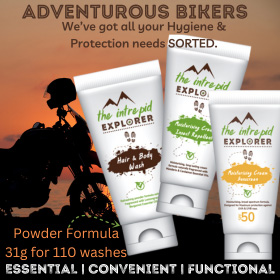 5Likes 5Likes
 |

8 Nov 2011
|
|
Registered Users
Veteran HUBBer
|
|
Join Date: May 2011
Posts: 281
|
|
|
RTW on 100cc underbones - Underboning the World
In December of 2010, I floated the idea of riding around the world on motorbikes past my wife. Fun, excitement, the open road, oh, and crooked border agents, rain and stifling heat, and “It’s gonna cost how much?!?” After some discussion and basic research, we decided that it was a dumb idea. We had recently completed a nearly 9 month backpacking trip in SE Asia and were getting antsy to go somewhere again, but where? We settled on backpacking around India and then revisiting our favorite places in SE Asia with the idea of finding a place we liked and settling in to teach English for a few years. Plan decided, we started doing the research but never could get really excited about it. No other plan had the excitement, challenge, or potential epic nature of the motorbike trip. So in the end of May, we once again returned to the RTW idea, but with a twist.
We would do it on underbones. We were, of course, inspired by nathanthepostman and Dabinche and our own travels through SE Asia. We had rented scooters and underbones in Thailand, Cambodia, Laos and Indonesia and had enjoyed the slower pace that they enforced. We’ve found that 35 mph is the perfect pace for much of the developing world. Parts are widely available, mechanics know how to work on them, tires are easily available, and we wouldn’t look like invaders from another planet. They are also inexpensive (better for Carnet) and lightweight (better if they decide to take a nap or need to be loaded in a boat). We also chose underbones for more personal reasons. We had considered going 2-up on my V-strom, but Re (my wife) is too small (and short) to ride it solo if I was ever unable to. So we looked at taking two bikes. Most of the advice suggests taking identical bikes as to only have to carry one set of spares and tools. So what then? We considered CRF-230s and XT-250s but finally settled on underbones for the reasons mentioned above.
So which underbone? Initially I had thought of the Honda CT-110s, but eventually settled on the mighty SYM Symba! Our local dealer was having a sale on Symbas ($1999 each) and they were about the same price as a good CT-110 but with the advantage of being 30 years newer. Some basic research into the Symbas showed that they are (probably) capable of the miles and hours we will be requesting of them. Another advantage is that there is a SYM importer on every continent we plan to visit (hopefully eliminating the 3-month wait other riders have encountered for a new final drive or other such nonsense). Additionally, they are just good old motorbikes, no ABS, no EFI, no computer of any sort - just a carb, a piston, a backup kickstarter, and one fuse. I can fix these with hand tools and a shop manual. All that and about 100 mpg!

These bikes will hopefully be our trusty companions for the next twelve to fourteen months as we wind our way across the USA (from Oregon to North Carolina), up to Toronto (where our bikes get on the plane), to Capetown, South Africa and through India, SE Asia, and (if our money and butts hold out) Indonesia and Australia, before flying back to Los Angeles and riding up the coast back to Portland.
I guess we should tell you a little bit about ourselves and how we ended up at this point. I (Colin) am 44 years old, have a professional degree, and have been an avid motorcyclist for many years. My parents always forbade motorcycles and it took me a few years to realize I was old enough to do whatever the I wanted to, so at 25 I took the MSF course and never looked back. In the past 19 years I have racked up over 180K miles of street, dirt, and road racing with WERA and CCS. I have wrenched on and rebuilt both motorcycles and cars, both two and four stroke, and my wife has been my “tool monkey’ all along. Re is 42 and has less riding experience but is an MSF grad and has lots of miles on her (former) KLX650C ‘motard that we built for her.
A few years ago we had an epiphany of sorts, realizing that we really don’t have to do anything we don’t want to. At the time, we had been married for 19 years and had always lived as if we might someday have kids. Working two jobs, buying homes in good school systems, climbing the ladder, moving for better jobs, and saving for the proverbial “rainy day”. We, however, found ourselves childless and forty. So why were we doing what we were doing? We had just moved to another town we didn’t want to live in, farther from friends and family, for a job I didn’t really want and it suddenly hit me - why? Why be here? Why not just do what we wanted to do instead? No kids, no responsibilities, no reason to leave a legacy - why wait any more? Honestly, it was kind of staggering - if you didn’t have to do anything for at least a few years, what would you do?
When we were in high school, I would get the new copy of the “Lets Go Guide to Europe” every year and sit down with a highlighter and we would dream of where we would go. But after college there were jobs and houses and careers and friends and family and never any time to go anywhere for more than a two week vacation. That pesky “Let’s Go” memory came flooding back, and we decided to quit our jobs, put everything we didn’t sell or donate into storage and just go. We settled on SE Asia (as we love the food and we really just travel to eat!) and started planning. It took about 10 months to disentangle our lives and shoulder our packs, but we were off with a one-way ticket to Vietnam. After about 9 months of bumming around Vietnam, Thailand, Cambodia, Laos, Indonesia, and Singapore, we found ourselves in Portland, Oregon. We once again tried to get back into the daily grind but it didn’t last long. The genie was already out of the bottle. We found ourselves cruising ADVRider, HUBB, and various “Teach English Abroad” websites. (One of our traveling companions said to never fly first class, that way you don’t know what you are missing - we now know what we are missing) Perusing the RR section of ADV led us to nathanthepostman’s trip, Dabinche’s Alaska adventure, and to Brian and Marie’s 2uprtw story and off we go again!
|

8 Nov 2011
|
|
Registered Users
Veteran HUBBer
|
|
Join Date: May 2011
Posts: 281
|
|
|
So what are we taking?

For luggage we decided on a Pelican Storm iM2600 topcases, topped by an Ortlieb 49L waterproof duffel, all mounted to Carter Brothers’ rear racks and secured with a pair of Rok-Straps each.

We also installed stock SYM front racks to carry our spare 1 gallon gas cans on. We also made a set of “custom” bike covers to attract less attention when parked.

We are carrying a fairly complete tool kit including wrenches that can turn every fastener on the bikes as well as spare wire, JB Weld, zip-ties, rags, rubber gloves, a funnel, and more. We were also able to get some spares from the new SYM importer and have a spare set of cush rubbers, a brake lever and cable, a complete set of wheel bearings, an air filter, spare chains and master links, inner tubes, and spark plugs, spare tires and a set of stock sprockets. We also have tire irons, a Lezyne micro pump, Dupont Teflon chain lube and a fairly extensive patch kit. All of our bikes and luggage will be secured by a couple of Krypto cables, Pacsafe covers for the Ortliebs, and a couple of alarmed cable locks and a bunch of padlocks for the Pelicans.

For riding gear we are each wearing Darien Light jackets and pants and Nolan N90 helmets. As we plan to do a fair bit of walking and hiking, we went with Vasque Goretex hiking boots in lieu of dedicated riding boots. We are also each carrying 5 sets of underwear, socks, and shirts and three pairs of convertible pants. A lightweight Marmot rain jacket, set of Smartwool micro weight base layers, bathing suit and pair of sandals each rounds out the wearables.
For camping we have a Mountain Hardware Drifter 2 tent and footprint, Big Agnes Yampa bags and Air Core pads, and silk bag liners. A Coleman Expedition 442 stove (runs on unleaded) and MSR Quick 2 cookware will provide us some snacks and a First Need XL water purifier (and a spare cartridge) and two 4L MSR Dromedary bags should give us safe drinks. Two Big Agnes Easy Chairs will give us a place to plop at the end of the ride.
Our first aid kit includes the usual potions and plasters as well as some dermabond, suture closures, needles and syringes, doses of malaria meds, Cipro and azythromycin (apparently Dehli Belly is now Cipro resistant). For toiletries we have the usual bathing, brushing and shaving stuff but are using Dr. Bronner’s liquid soap for most things and Re is trying the solid shampoo and conditioner from Lush Cosmetics.
For electronics, we have an iPhone, and iPod touch, a GoPro Hero HD video camera, a laptop (complete with the Symba shop manual), and a Panasonic DMC-ZS1 camera, and a Garmin 60CSx, and a ton of cables to plug this into that.r
Add in a poop trowel, kite, a Frisbee, a compass, storm lighter, a headlamp, a tent lantern, a couple of flashlights, some clothes drying stuff, and a Swiss Army knife or two and we are good to go.
|

8 Nov 2011
|
|
Registered Users
Veteran HUBBer
|
|
Join Date: May 2011
Posts: 281
|
|
|
More trip preparation
When we decided to actually go on this trip it was nearly the end of May. The lease on our apartment was up on July 31st. This made August the natural starting point for the trip, but it only gave us 13 weeks to plan the trip and get everything else done.
Excited about the idea, we went to the travel section of Powells Books and pulled out the Lonely Planets. We quickly came up with a list of countries we’d like to visit and of those we wouldn’t. Central and South America are natural destinations for North Americans, but given the security concerns, we quickly crossed them off our list. We had traveled in Southeast Asia a couple of years ago and loved it. We wanted to return to see the places not easily accessed via public transportation, so we put it on our list. We had already done a bunch of research on India and Nepal, so they went on the list as well. Also on the list was riding across the US from Portland, Oregon where we lived, to Missouri, North Carolina, and Ohio, where we had family and friends. This left the question of how to connect the east coast of the United States and India. We briefly considered Europe but nixed it due to the expense and relative cultural similarity.
That left Africa. But where? Central Africa was never on the list- visiting active war zones like the Democratic Republic of the Congo and Somalia was not an attractive proposition. Northern Africa also seemed iffy with the unrest of the Arab Spring and recent relocation of the Dakar Rally. That left Southern Africa. So we filled our shopping basket with the Lonely Planet Southern Africa, India, and Southeast Asia on a Shoestring and headed home.
The next day, we consulted weather charts on the internet, which pretty much set our schedule. Our route will (hopefully) hit the dry but not too hot path around the world. We also made a list of countries that require carnet, visas in advance, and made a quick list of comparative costs by country. After doing some ciphering on the money, we decided we could afford the twelve to fourteen months of travel our trip now encompassed.

So, decision confirmed, I headed down to Classic Scooter and Cycle in Portland and purchased two brand spankin’ new, baby blue Symbas. I spent the next couple of weeks glued to the computer screen scouring ADVRider, HUBB, and Symforum for advice on gear, the bikes, and travel planning. We soon started making decisions on gear purchases, and boxes began to arrive at our door. It was like Christmas every day! At the same time, I started working to arrange Carnet du Passage for the trip. This was a relatively easy process; Suzanne Danis, at the CAA, is great to work with. The only hitch in the Carnet process was a strike by the Canadian Postal Service, but a digital camera and email got our documents to Canada without trouble.

Re was in charge of medications and vaccines. She did the research as to what we needed and set up the appointments. We added yellow fever, polio, and our final hepatitis shots to our list of immunizations. We also got prescriptions for Cipro, Azithromycin, and curative doses of Malarone (for malaria) to include in our first aid kit.

The bikes were prepped for the trip- we had a blast putting on the break-in mileage. We installed various racks and a 12V charger to keep our electronics juiced up on the road. Spare parts were difficult as SYM has recently changed importers, but Michael at Alliance Powersports came through for us in a big way. Because of the lack of spare parts in the country and the time involved in getting them from overseas, Alliance actually pulled our spares off of the last new Symba they had in stock.
Shipping the bikes was a nightmare all on its own and almost stopped our trip before it began. It turns out that getting bikes to Europe is easy, but to Africa, not so much. Re spent untold hours on the internet and telephone trying to find anyone who would even give us a quote for shipping to Africa. I also spent hours scouring HUBB and ADVRider for any possibilities. Re finally got a quote from a US shipper of around 4200 USD for a 20 foot shipping container, which would take a mere 50 days to get to Durban, or 8500 USD!!! by air to Johannesburg. That seemed like an awful lot for two tiny, little 199 pound bikes. But Re persevered and out of a call to Royal Air Maroc, the idea of shipping from Canada arose. Re then researched route maps from eastern Canada to Africa and discovered that British Airways has service from Toronto to Cape Town, South Africa. She definitely didn’t have her hopes up when she called British Airways Cargo in Toronto and was connected with our new best friend, Savio. When asked about shipping our bikes, Savio said, “Sure, when do you want them there?” He followed this up with an email quote and an explanation of weight by volume. Basically, if we pull off the front wheels and fenders, detach the handlebars, and stuff both bikes into a crate, the rate will be approximately 2000 USD. He also recommended a crating company and a company to handle the dangerous goods paperwork.
With most of the trip planning done by the beginning of July, we turned our attention to making arrangements for being on the road for a year or more. We sold our cars, other motorcycles, and a variety of household goods with the assistance of eBay and Craigslist. We also had to quit jobs, cancel utilities, and pack all of our worldly possessions for storage. Arranging to have our few bills paid, mail answered and taxes completed took a bit more doing (thanks mom and dad!). We also had to arrange to maintain our professional licenses while we are gone. Paperwork out of the way we then had to pack up everything we still have and move it to climate-controlled storage. Over the last two trips we have pared our possessions down to a minimum and now all our stuff (including a Honda Minitrail 50 and a Honda RS250/CR500 race bike) fit in a 7.5ft x 10ft x 10ft storage unit with room to spare. With two days to go before departure we were camping in our now empty apartment. While Re cleaned the apartment (hopefully we will get our security deposit back!) I did final prep on the bikes and made a run to the hazardous waste disposal. The final night saw one last trip to the Horse Brass for fish and chips and a pint of deliciousness before our departure. Tummies full, we crawled into our Big Agnes bags and tried to sleep.
|

8 Nov 2011
|
|
Registered Users
Veteran HUBBer
|
|
Join Date: May 2011
Posts: 281
|
|
|
July 30, 2011
After a surprisingly decent night’s sleep, we awoke before the alarm even went off. It was kind of like Christmas morning, we were wide awake and ready to go. I had estimated that we should be able to make 300 or more miles per day, but this was based on nothing more than a guess. Around town we had seen speeds of 50mph or so, but we had never ridden our bikes fully loaded and had no idea what kind of speeds we’d be able to maintain as we headed up over the mountains with 50-60 pounds of gear. As our first stop was about 275 miles into the center of Oregon, I figured we should be on the road at 8am. We quickly showered, drank our coffee, and got busy loading the bikes and taking out the trash. We soon found that we didn’t have nearly as much luggage space as we thought, so the 1 gallon Ziploc bag of Corn Chex and almost full bottle of whiskey were unceremoniously chucked into the dumpster.

After shedding a quick tear (for the whiskey), we heaved our little piggies off of their side stands and headed out for the first stop of the day. Which was about 5 miles down the road for a bagel and coffee. Now we were ready to roll. It took us a few miles to get used to the effect the added weight had the bikes and stop looking like a couple of drunken sailors weaving down the road. We made our way through urban Portland into the suburbs and eventually found ourselves facing the first real climb of the trip - Mount Hood. Highway 26 (our route for the next couple of days) winds its way around the side of Mount Hood and we soon found that while we could comfortably cruise at about 43-46mph in fourth gear on level ground, third gear and 35mph was our best pace on anything steeper than a moderate hill.
It was on this stretch of road that we discovered that images of cars and trucks in our side mirrors as they jockeyed to pass us were to be our constant companion for most of the trip. As we neared the pass at the top of 26, the sun broke through the gloom that has been winter, spring, and summer in Portland and we both started smiling inside out helmets. Re let out a whoop that I could hear from 50 feet away - we were finally on our way. The rest of the trip that day was fairly uneventful, we had to stop and refuel from our fuel jugs, we met some nice people who were interested in our trip, and we rode into the high desert that is central and eastern Oregon.
I also discovered that I had a lot more time to look around and enjoy the scenery at 45mph than I ever had on my Concours or Strom. We also both found our flinch at being passed way too closely began to subside by the end of the day. At the end of a beautifully warm and sunny day, we rolled into the Clyde Holliday state park in Mt. Vernon, Oregon. The sign said that the campground was full, but the camp host quickly pointed us to their “Bike and Hike” section where motorcyclists, bicyclists, and hikers can pitch their tents for $5 per person.

We set up camp and then rode into John Day for dinner at Subway. We used to live and work in John Day a few years ago and also ran into a few old friends and acquaintances. We then headed back to the campground for a good night’s sleep.
293 miles today, bikes ran great except that Re’s bike made a “funny sound” once.
|

8 Nov 2011
|
|
Registered Users
Veteran HUBBer
|
|
Join Date: May 2011
Posts: 281
|
|
|
July 31 and April 1, 2011
We woke with the sun, we are going to have to learn to adjust to the new schedule of going to bed when the sun goes down and rising this freaking early. This was a rest day as our friends were throwing a BBQ later that afternoon. After a leisurely morning around the campsite, I broke out the tools and gave the bikes a once-over. The tire pressures on both of our bikes were inexplicably low (operator error, I’m sure) and I set them to my preferred 30/34. Chain tension was still correct (for what would probably be the only day of the first half of our trip), so they each got a shot of chain lube and were pronounced good. Oil levels were also good and fasteners were also tight except for Re’s swingarm nut that was an RCH loose. After a quick brunch of fried chicken and local peaches from the grocery store, we toured a few of the places we used to live and wandered to the BBQ in the early afternoon. We spent the rest of the day eating, talking and laughing before heading back to Clyde Holliday for another night.
The next morning we rose early (again) and exchanged pleasantries with a couple of Harley-mounted riders who spent the night there as well. We struck camp and were on the road by 8am, and we reluctantly stopped at the local McDeath to eat a breakfast of Sausage McMuffins standing next to the bikes. Little did we know that those greasy, pork-like handfuls would be our only food for the next 12 hours. The day started out warm and quickly turned hot; by noon the bank signs read 96 degrees. I know that this is cool compared to the summer many folks had, but we were living in Portland - which just experienced the third coolest spring ever. We were pleasantly surprised by the venting in our Darien Lights- hot temperatures and low humidity weren’t too bad. Riding out of Prairie City, Oregon, we faced our first 5000 foot pass over Dixie Mountain. We made it, but again found ourselves in third gear and cruising at 35mph. Throughout the morning, we wound our way through the sagebrush and scrubby junipers that dominate the landscape in eastern Oregon and western Idaho. Over the next several hours of riding, fuel stops, and water breaks, we hop-scotched back and forth with the Harley riders from the campground.

Because we can’t legally travel on interstate highways (anything with a blue sign is a no-go) we have to take the “scenic routes”. While they do provide some nice scenery in places, we also found them to be lacking in services. Bringing extra gas cans turned out to be great planning as in many places, gas stations were father apart than our 100 mile range. We also learned to shake out the fuel nozzle on our fuel cans, after we stopped to refuel and watched helplessly as a beetle that apparently crawled inside the tube spiraled around in the refueling funnel before disappearing into Re’s fuel tank. Doh! The “scenic” nature of the route also meant that there were few places to eat along the way. This combined with the heat led us to skip lunch and simply press on. We finally arrived in Bliss, Idaho (after missing one turn and subsequently backtracking) after 8pm with no campground and no dinner. We finally ate at a café inside a local gas station (it was pretty good) before hot-footing it south to Hagerman, Idaho and our campground for the evening. We set up the tent by the light of the headlamp and crawled inside to pass out.
359 miles in about 12 hours of riding. The bikes ran pretty well but don’t seem to like the altitude, I had to adjust the idle speed higher a couple of times.
|

8 Nov 2011
|
|
Registered Users
Veteran HUBBer
|
|
Join Date: May 2011
Posts: 281
|
|
|
8/2 Hagerman, Idaho to Hoback Junction, WY
We awoke to an overcast morning, and the lack of sunlight coupled with the hard ride the previous day made for a slow start to the day. After firing up the Coleman 442, I unrolled my tarp and got to work on the bikes. Both bikes needed a chain adjustment and quick lube. The oil level was still mid-dipstick on both bikes, but Re’s exhaust header nuts were slightly loose. Re also needed a couple of psi in the front and rear tires. We eventually got everything packed up, and a shower and coffee gave us the necessary kick in the pants we needed to get back on the road.
We rode back to Bliss, Idaho and fueled up at the gas station where we ate the previous evening. We also enjoyed another breakfast standing bikeside, but this time of some pretty damned good breakfast burritos from the same place. Re also took the opportunity to add a couple of Clif bars and some trail mix to her daypack so we would at least have something to snack on if we couldn’t find lunch again. Suitably provisioned, we pulled out once again onto Hwy 26 and headed east. The central and much of the eastern part of Idaho reverted back to the sagebrush, juniper and rocks that dominated much of our Oregon leg, but without so much elevation change. Some people would describe it as starkly beautiful, the less romantic might call it monotonous.

One interruption to the monotony was the Craters of the Moon National Monument area that we encountered. Lava fields stretched on in all directions for many miles before giving way to… more sage. Sigh. Our other constant companions for the day were huge rain clouds visible to the south of us nearly the entire ride, but we never saw a drop. We eventually stopped in Blackfoot, Idaho for a late lunch and fuel stop, and both of our bikes refused to idle. After Re’s bike stalled and refused to re-start quickly while sitting at a now green light in front of a cement truck that was impatiently honking at her, I had to turn the idle screw 1.5 turns to have any semblance of an idle. I also fattened up the A/F screw .25 of a turn to try to reclaim some of our lost power - when you only have 6.7 hp to begin with, you can’t afford to give much of it up! After a few more hours of riding we found ourselves in the beauty of the Targhee National Forest and were very happy to have the change in scenery (even if it did come with a whole new set of long, slow climbs).

As the sun started to get low in the sky, we wound our way into Wyoming and into the Bridger-Teton National Forest. This area is south of Jackson, Wyoming and the Grand Teton National Park and was absolutely stunning in its beauty. The bikes wheezed up and coasted down the roads on our way to Hoback Junction and the KOA that would be our home for the night. While Re checked us into the KOA (and scored a $5 discount with her storytelling skills) I again richened up the A/F mixture by another .25 of a turn; the bikes were not happy with the thin air at all. While I set up camp for the night, Re ran to the grocery store for the eggs, cheese and tortillas for dinner (and breakfast). As a special treat, she also came back with a couple of big bottles of Lagunitas’ Hop Stoopid Ale. Yum! We spent the chilliest night of the trip so far- I had to put my fleece on in the middle of the night, but Re was OK as she had opted for the insulated Big Agnes Aircore mat.
326 miles in about 12 hours of riding, bikes not at all happy with the altitude and hill climbs and were punishing their chains.
|
|
Currently Active Users Viewing This Thread: 1 (0 Registered Users and/or Members and 1 guests)
|
|
|
 Posting Rules
Posting Rules
|
You may not post new threads
You may not post replies
You may not post attachments
You may not edit your posts
HTML code is Off
|
|
|
|
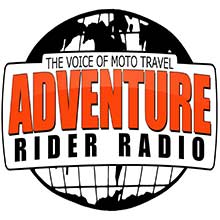
Check the RAW segments; Grant, your HU host is on every month!
Episodes below to listen to while you, err, pretend to do something or other...
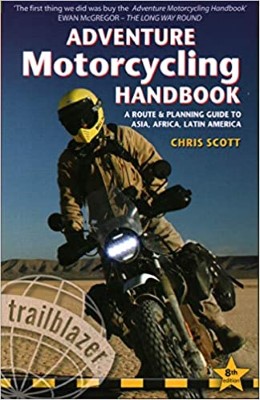
2020 Edition of Chris Scott's Adventure Motorcycling Handbook.
"Ultimate global guide for red-blooded bikers planning overseas exploration. Covers choice & preparation of best bike, shipping overseas, baggage design, riding techniques, travel health, visas, documentation, safety and useful addresses." Recommended. (Grant)

Led by special operations veterans, Stanford Medicine affiliated physicians, paramedics and other travel experts, Ripcord is perfect for adventure seekers, climbers, skiers, sports enthusiasts, hunters, international travelers, humanitarian efforts, expeditions and more.
Ripcord Rescue Travel Insurance™ combines into a single integrated program the best evacuation and rescue with the premier travel insurance coverages designed for adventurers and travel is covered on motorcycles of all sizes.
(ONLY US RESIDENTS and currently has a limit of 60 days.)
Ripcord Evacuation Insurance is available for ALL nationalities.
What others say about HU...
"This site is the BIBLE for international bike travelers." Greg, Australia
"Thank you! The web site, The travels, The insight, The inspiration, Everything, just thanks." Colin, UK
"My friend and I are planning a trip from Singapore to England... We found (the HU) site invaluable as an aid to planning and have based a lot of our purchases (bikes, riding gear, etc.) on what we have learned from this site." Phil, Australia
"I for one always had an adventurous spirit, but you and Susan lit the fire for my trip and I'll be forever grateful for what you two do to inspire others to just do it." Brent, USA
"Your website is a mecca of valuable information and the (video) series is informative, entertaining, and inspiring!" Jennifer, Canada
"Your worldwide organisation and events are the Go To places to for all serious touring and aspiring touring bikers." Trevor, South Africa
"This is the answer to all my questions." Haydn, Australia
"Keep going the excellent work you are doing for Horizons Unlimited - I love it!" Thomas, Germany
Lots more comments here!

Every book a diary
Every chapter a day
Every day a journey
Refreshingly honest and compelling tales: the hights and lows of a life on the road. Solo, unsupported, budget journeys of discovery.
Authentic, engaging and evocative travel memoirs, overland, around the world and through life.
All 8 books available from the author or as eBooks and audio books
Back Road Map Books and Backroad GPS Maps for all of Canada - a must have!
New to Horizons Unlimited?
New to motorcycle travelling? New to the HU site? Confused? Too many options? It's really very simple - just 4 easy steps!
Horizons Unlimited was founded in 1997 by Grant and Susan Johnson following their journey around the world on a BMW R80G/S.
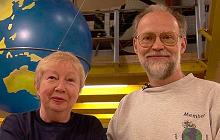 Read more about Grant & Susan's story
Read more about Grant & Susan's story
Membership - help keep us going!
Horizons Unlimited is not a big multi-national company, just two people who love motorcycle travel and have grown what started as a hobby in 1997 into a full time job (usually 8-10 hours per day and 7 days a week) and a labour of love. To keep it going and a roof over our heads, we run events all over the world with the help of volunteers; we sell inspirational and informative DVDs; we have a few selected advertisers; and we make a small amount from memberships.
You don't have to be a Member to come to an HU meeting, access the website, or ask questions on the HUBB. What you get for your membership contribution is our sincere gratitude, good karma and knowing that you're helping to keep the motorcycle travel dream alive. Contributing Members and Gold Members do get additional features on the HUBB. Here's a list of all the Member benefits on the HUBB.
|
|
|







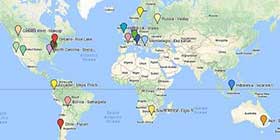











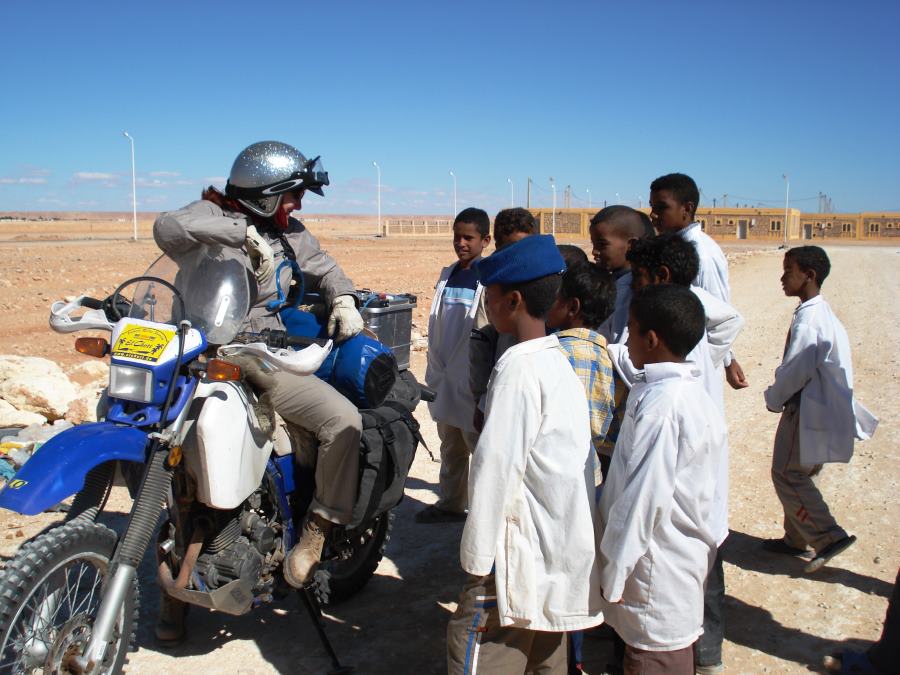

 5Likes
5Likes




















 Hybrid Mode
Hybrid Mode


